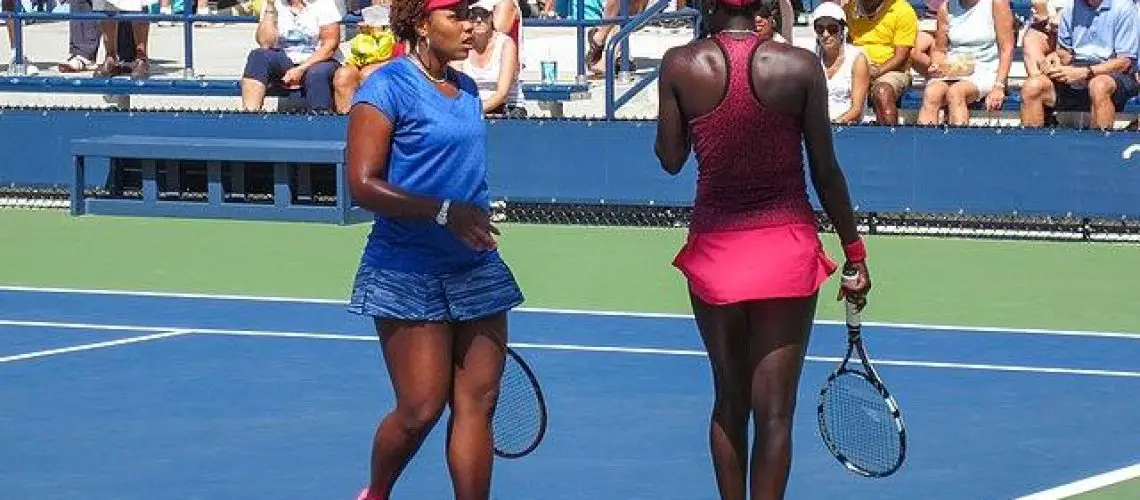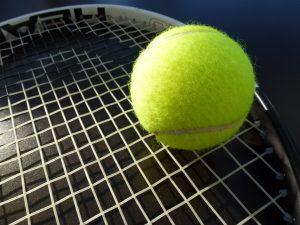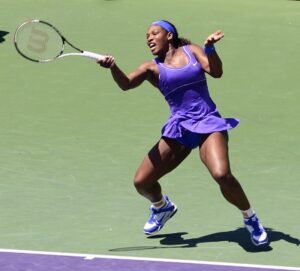We may earn money or products from the companies mentioned in this post.
Introduction

Playing tennis is not just about smashing powerful shots or executing flawless volleys; it’s also about the small details, like the grip you use on your racket The importance of having the correct grip in tennis cannot be overstated It can have a significant impact on your performance and even help prevent injuries Moreover, finding the right grip allows players to customize their playing style and ensures maximum comfort on the court
Enhancing Performance and Avoiding Injury
The way you grip your tennis racket directly affects how you execute your strokes A proper grip allows for more control over the ball, leading to better accuracy and power in your shots Whether it’s a forehand drive or a backhand slice, having the correct grip lets you transfer energy efficiently from your body to the racket
Not only does a correct grip enhance performance, but it also helps prevent injuries Tennis involves repetitive motions and high-impact movements that can strain muscles and joints if not executed properly Using an incorrect grip puts unnecessary stress on specific areas of the hand, wrist, and arm, increasing the risk of strains or even long-term conditions like tennis elbow
Customizing Grips for Personal Comfort and Play Style
Every player has unique preferences when it comes to how they want to hold their racket Some players prefer a more relaxed grip for increased maneuverability, while others opt for a firmer hold to generate more power behind their shots Finding the perfect balance between comfort and control is crucial
Additionally, different grips suit different playing styles For example, an Eastern forehand grip offers stability and control for players who prefer topspin-heavy shots with plenty of control On the other hand, a Continental or Hammer grip is popular among serve-and-volley players who rely on quick reflexes at net play
By experimenting with various grips and finding what works best for them, players can fine-tune their technique and optimize their performance on the court It’s like finding the perfect pair of shoes – when you have a grip that feels just right, it boosts your confidence and allows you to focus solely on your game
Conclusion
In conclusion, grip plays a vital role in tennis The correct grip enhances performance by improving control and power while reducing the risk of injuries Moreover, customizing grips based on personal comfort and play style is essential for maximizing potential on the court So next time you step onto the tennis court, pay attention to how you hold your racket – it might just be the key to unlocking your full potential as a player
Types of Grips

Grips are an essential aspect of tennis technique, as they directly affect how the player interacts with the racket and controls the ball There are various types of grips available, each with its own advantages and disadvantages Let’s dive into the four main types of grips: Eastern, Western, Semi-Western, and Continental
Eastern Grip
The Eastern grip is one of the most commonly used grips in tennis It involves placing the base knuckle of your index finger on bevel two (Eastern) on the racket handle This grip facilitates power generation due to its ability to generate force efficiently through the wrist and forearm
However, while it excels in power shots like flat groundstrokes and serves, it can limit a player’s ability to generate topspin or slice effectively due to its flatter hand positioning
Western Grip
The Western grip is a popular choice for players who prioritize spin generation in their game With this grip, you place your base knuckle on bevel five or six (Western) on the racket handle
This grip allows players to generate exceptional topspin on their groundstrokes by using a windshield wiper motion with their wrist However, it can prove challenging for players when adjusting to flat shots or low balls due to its extreme angle
Semi-Western Grip
The Semi-Western grip strikes a balance between power and spin capabilities It involves placing your base knuckle between bevels three and four (Semi-Western) on the racket handle
This versatile grip enables players to produce both power and spin while maintaining good control over their shots However, mastering this grip requires time and effort due to its slightly altered hand position compared to the Eastern grip
Continental Grip
The Continental grip is primarily used for specific shots such as serves, volleys, and slices With this grip, you position your base knuckle on bevel one (Continental) on the racket handle
Players who favor a versatile serve, accurate volleys, and precise slice shots often opt for the Continental grip However, it may not be as effective when generating topspin on groundstrokes due to its flatter hand positioning
Understanding the different types of grips in tennis allows players to adapt their technique based on their desired playing style Each grip has its strengths and weaknesses, so it’s essential to experiment and find the one that suits you best!+
How to Find Your Ideal Tennis Racquet Grip Technique

When it comes to tennis, finding the right racquet grip technique can make all the difference in your game It’s not just about how you hold the racquet, but also understanding your playstyle and preferences In this article, we’ll explore some key factors to consider when searching for your ideal grip technique
Identifying Your Playstyle
The first step in finding your ideal tennis racquet grip technique is identifying your playstyle Are you an aggressive player who likes to dominate the court with powerful shots? Or are you more of a defensive player who relies on strategy and consistency? Understanding your natural style of play will help determine which grip technique suits you best
If you’re an aggressive player, a grip that allows for more power and control may be preferable On the other hand, if you’re a defensive player, a grip that offers better maneuverability and precision might be more suitable
Additionally, consider whether you have a preference for baseline or net play Baseline players tend to stay at the back of the court and rely on consistent groundstrokes, while net players prefer to approach the net and take advantage of volleys and quick reflexes The type of game you enjoy playing will also influence your choice of grip technique
Experimenting with Different Grips
Once you have a better understanding of your playstyle and preferences, it’s time to experiment with different grips Consulting with coaches or professionals can provide valuable insights into which grips are commonly used by players with similar styles They can also guide you through proper hand positioning and offer personalized advice based on their expertise
During training sessions, take the opportunity to practice each grip under different circumstances Test them out during drills, practice matches, and even competitive play if you feel comfortable Pay attention to how each grip feels in your hand and how it affects your shot execution Keep in mind that finding the ideal grip may require some trial and error, so be patient with yourself as you explore different options
Remember, finding your ideal tennis racquet grip technique is a personal journey It’s about understanding your unique playing style and preferences while also considering expert advice By taking the time to experiment with different grips and seeking guidance from professionals, you’ll be one step closer to optimizing your game on the court
Mastering Your Chosen Tennis Racquet Grip: Tips & Drills

Proper Hand Placement
One of the fundamental aspects of mastering your tennis racquet grip is ensuring proper hand placement The key is to find the V-shape formed by your thumb and index finger when gripping the racquet handle This V-shaped grip provides stability and control during your swings
a) Placement on racquet handle bevels: It’s important to note that different grips require specific placements on the racquet handle bevels Whether you’re using an eastern, continental, or western grip, understanding where to position your hand will optimize your performance on the court
Maintaining Appropriate Pressure Throughout the Swing
To avoid injuries like tennis elbow and enhance your stroke mechanics, it’s crucial to maintain appropriate pressure on the racquet throughout your swing Gripping too tightly can restrict fluidity and cause unnecessary strain
a) Avoid gripping too tightly: Be mindful of how much pressure you apply while holding the racquet Finding a balance between a loose grip and a firm hold will give you better control over your shots while minimizing the risk of injury
Drills to Improve Muscle Memory
Improving muscle memory is vital for developing consistency in your strokes and enhancing overall performance Here are some drills you can incorporate into your training routine:
a) Shadow Swings without Hitting a Ball: Practice executing proper form, footwork, and swing techniques without actually hitting a ball This drill allows you to focus solely on perfecting your grip and motion
- i) Practicing Proper Form and Footwork: By simulating different shots with correct form and footwork, you reinforce muscle memory and increase your ability to execute precise movements during real gameplay
- ii) Incorporating Grip Changes for Different Shots: Experimenting with grip variations during shadow swings helps you familiarize yourself with the adjustments required for different strokes, such as forehands, backhands, or volleys
b) Ball Feeding Drills: These drills involve a partner or a ball machine feeding balls to you The emphasis here is on maintaining the proper grip and technique while executing individual strokes
- i) Emphasizing Proper Grip and Technique on Individual Strokes: By focusing on each stroke separately, you can identify any flaws in your grip and make necessary corrections This drill allows you to fine-tune your technique for optimal performance
Consistently Practicing and Refining Your Chosen Grip
Consistency is key when it comes to mastering your chosen tennis racquet grip Regular practice sessions dedicated specifically to refining your grip will help solidify muscle memory and improve overall play Make it a priority to consistently evaluate and adjust your grip as needed based on feedback from coaches or personal observations
By following these tips and incorporating relevant drills into your training routine, you’ll be well on your way to mastering your chosen tennis racquet grip Remember, practice makes perfect, so commit yourself to consistent improvement both on and off the court!
Useful Links

How To Choose A Tennis Racket and Grip Size
The Definitive Guide on Tennis Grips
How Tennis Racket Grip Sizes Are Measured
Tennis Racquet Grips
How to Regrip a Tennis Racket: 8-Step Grip Replacement …
Jay Davern | Quick Tennis Tips: how to put on an over grip …
Wrap an Overgrip on a Tennis Racket
How to Grip Your Tennis Racquet | By GAMMA Sports
Tennis Tip: How To Find Your Racquet Grip Size
How to Wrap A Replacement Grip
Ultimate Tennis Grip System Guide
Tennis Forehand Grip Explained – All 4 Types [Used By Pros!]
How to Measure Your Tennis Grip Size
HOW TO GRIP A TENNIS RACKET – spyn
Tennis Grips | Different types of forehand grips explained
How to choose the right grip size for a tennis racquet …
How To Select Your Grip Size






